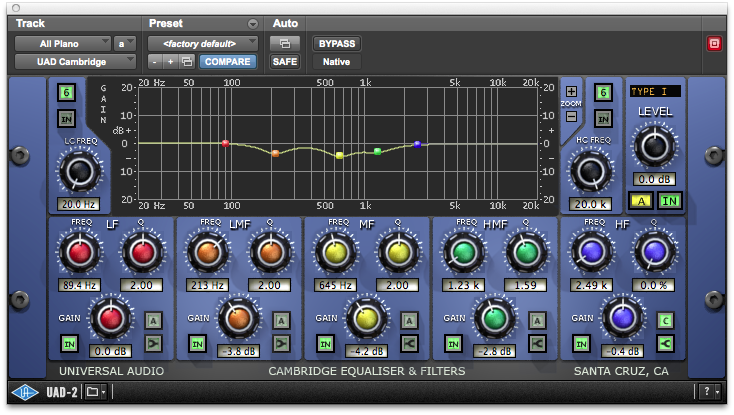This is no surprise to experienced audio engineers. Mixing with our ears should be the only method. Like I tell students,”…nobody watches music.” However, with DAWs, it’s difficult to ignore all the visual data that potentially influences one’s mix decisions.This can be especially overwhelming to amateurs in regards to equalization. Solutions range from closing your eyes to mixing in the analog domain. Digital control surfaces offer compromise. Of course making a conscious decision to acknowledge, sift through, utilize pertinent visual data is possible and should be encouraged.
It applies to equalization because of the proportional properties of frequencies. Once you get passed recognizing Low/Mid/Hi and get into frequencies there’s harmonics. Harmonics are multiples of a fundamental frequency and give instruments their timbre. Timbre is why the same note(fundamental frequency) played on a piano sounds different than on a trumpet, guitar, etc
In this example I used four mics to record this live piano at Windmill Valley Recording played by Ricky Hernandez on Bekah Kelso‘s new album Within the Shifting Shade.
I did some fine EQing on the individual tracks then routed the four tracks to a stereo bus. This is where this equalizer come in.The goal here was to clean up the piano’s midrange to improve clarity. This all happened intuitively while I avoided looking at the EQ while tweaking. I would bump the gain about 4db and sweep left or right after looking at the band’s original position. So I did not set out to mathematically equalize this track. I did the math after I was satisfied with my eq decisions.
I found 645hz (yellow)for the fundamental. Here’s where the proportional part of frequencies and harmonics are useful and visual data can be helpful. I went to the 213hz (orange) below the fundamental. After cleaning the mids I used 1.23k(green) to tame the “honky” high mids.
The Math:
Fundamental 645hz.
645hz divided by 3 gets you 215hz. I landed on 213hz
645hz multiplied by 2 gets you to 1.29khz. I landed on 1.23khz
There are many ways to understand and utilize equalizers. An Equalizer can be a scalpel or a machete.The most important one is listening to real instruments in person, listen to a lot of music and build your sonic vocabulary.
Happy frequency hunting!
